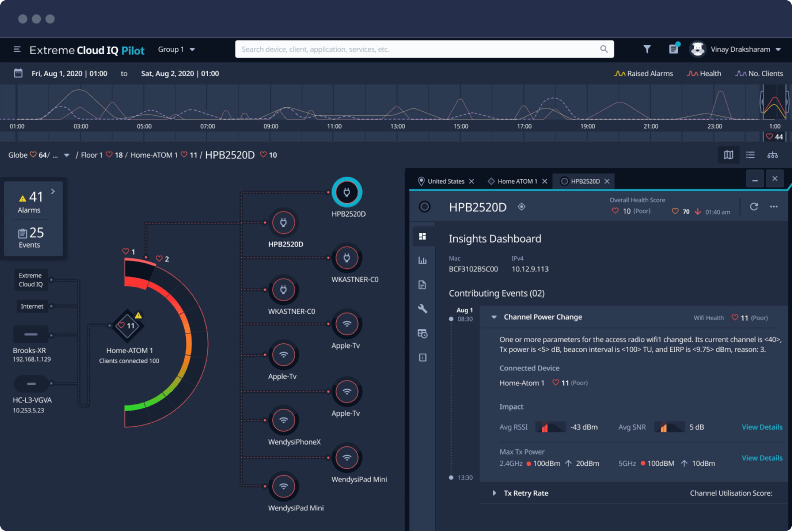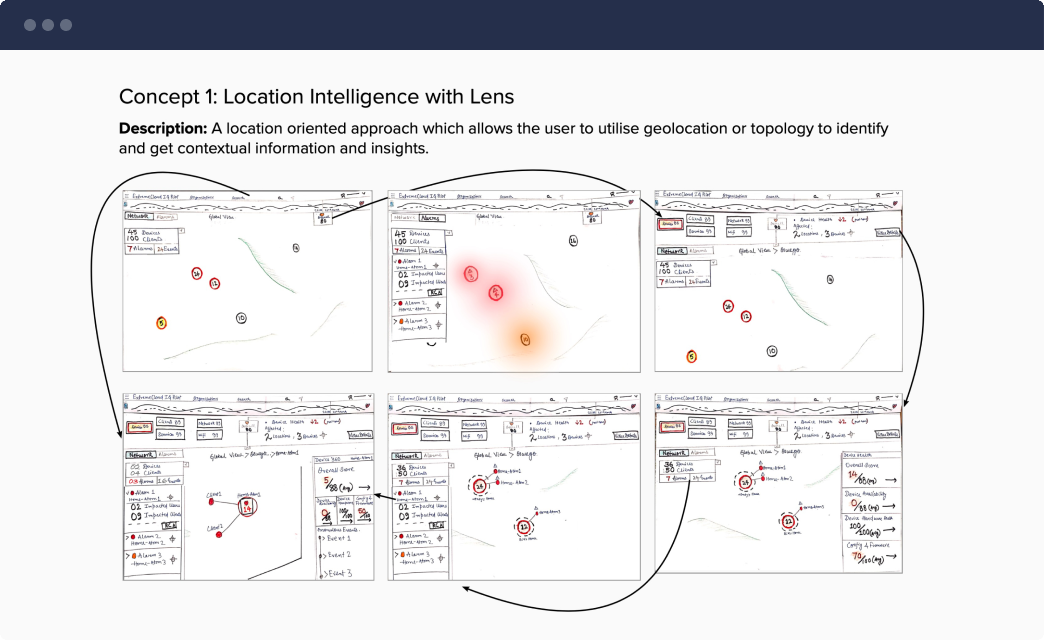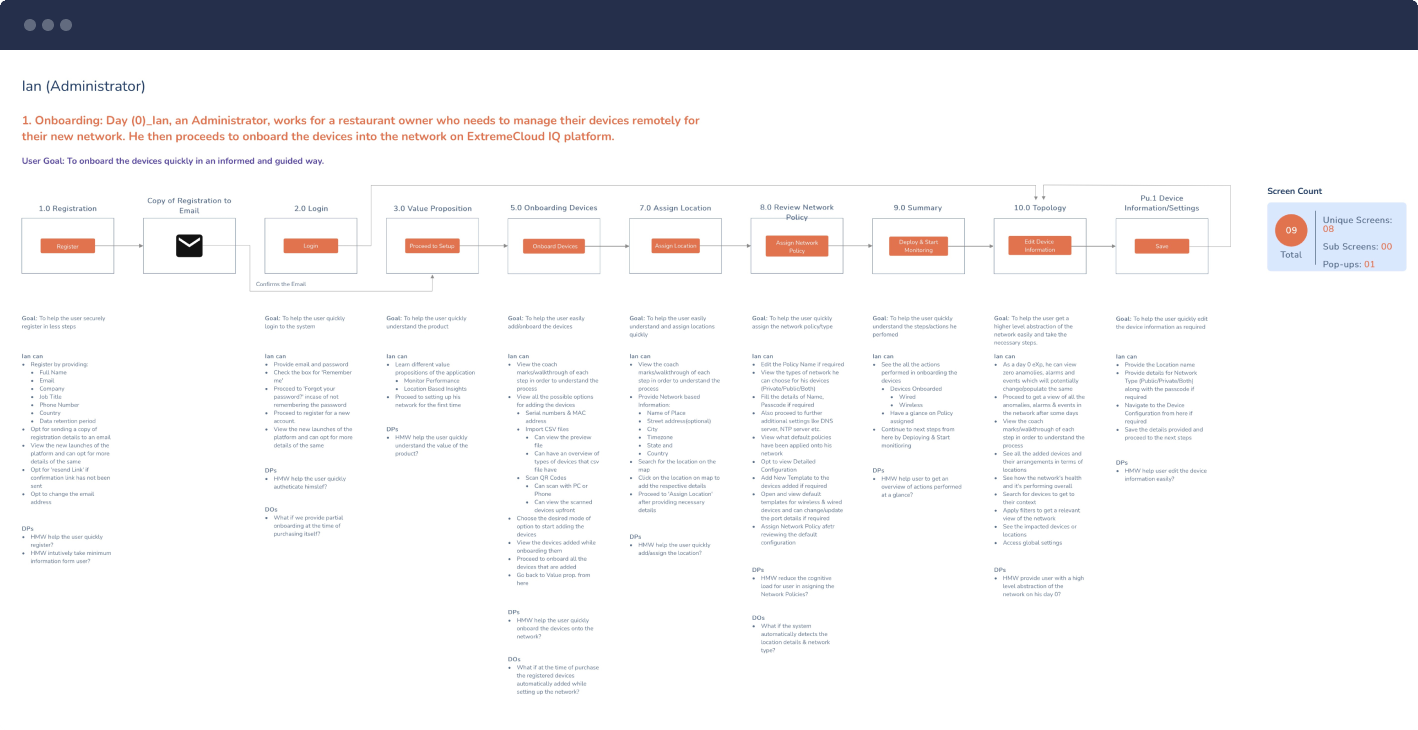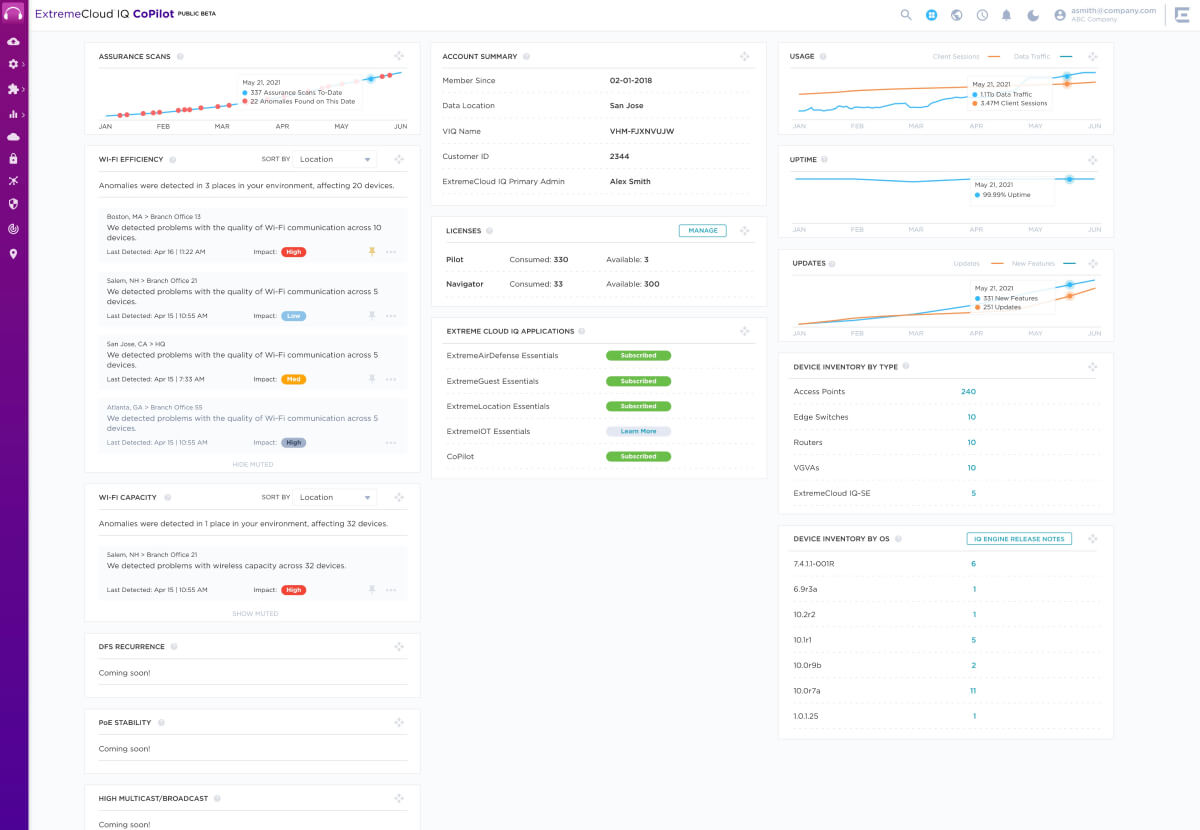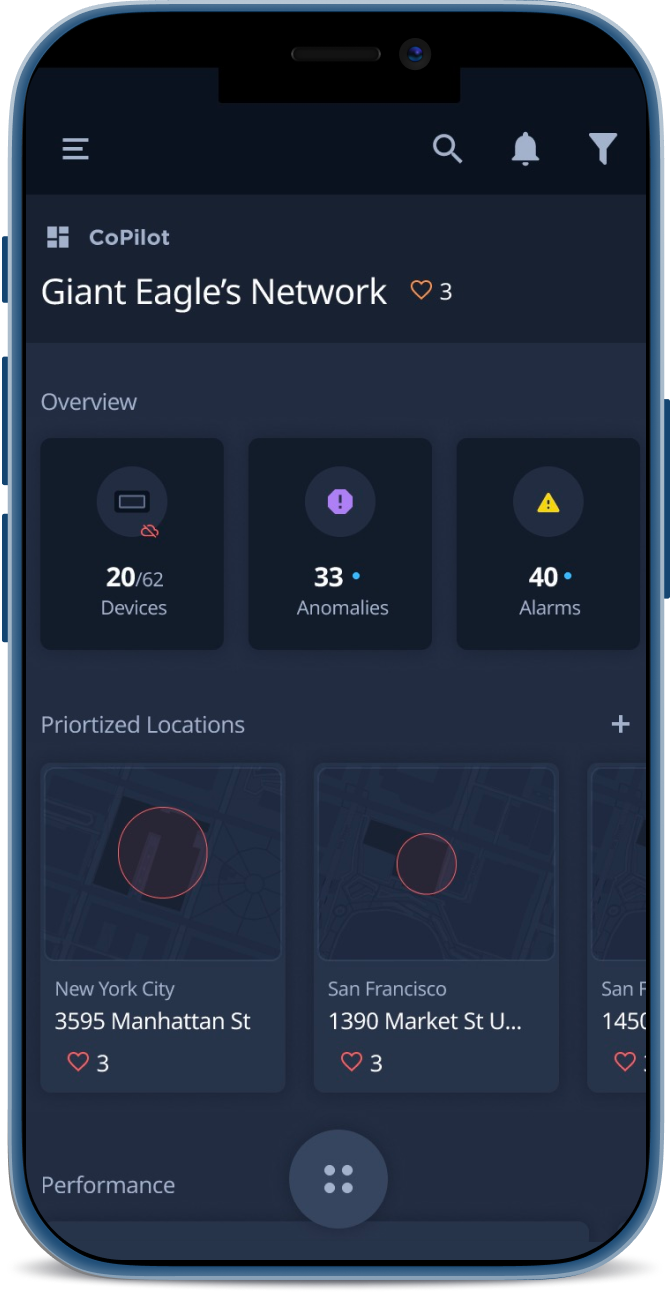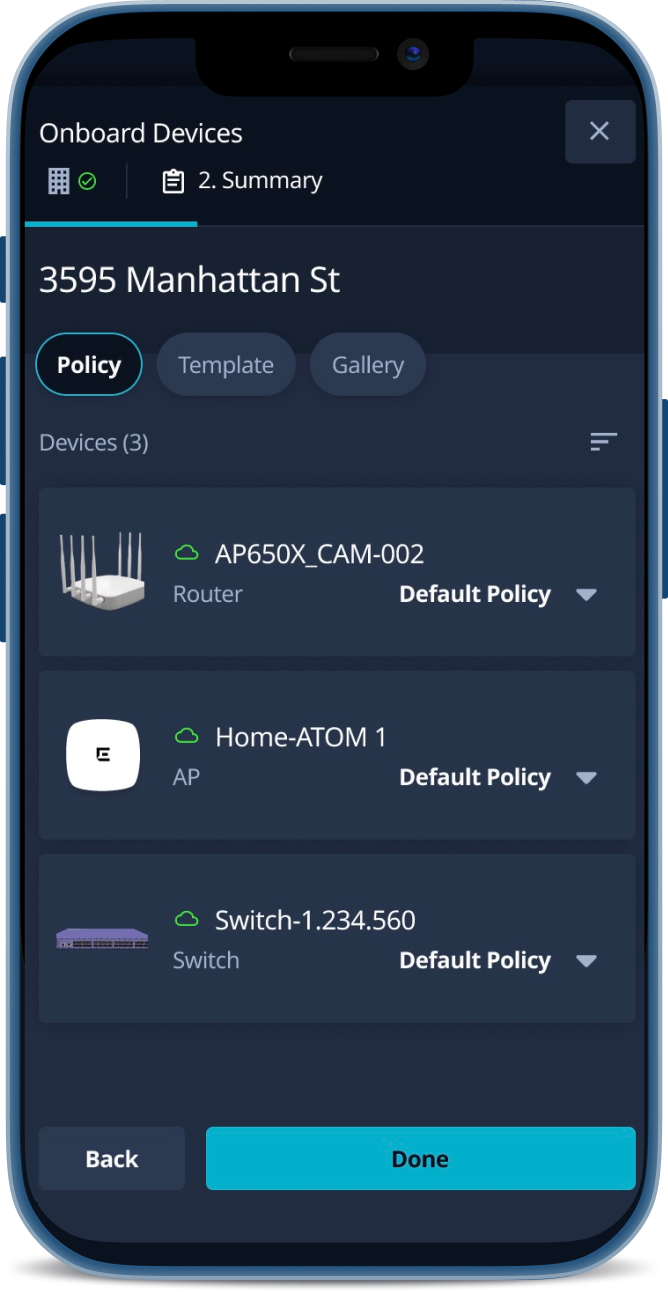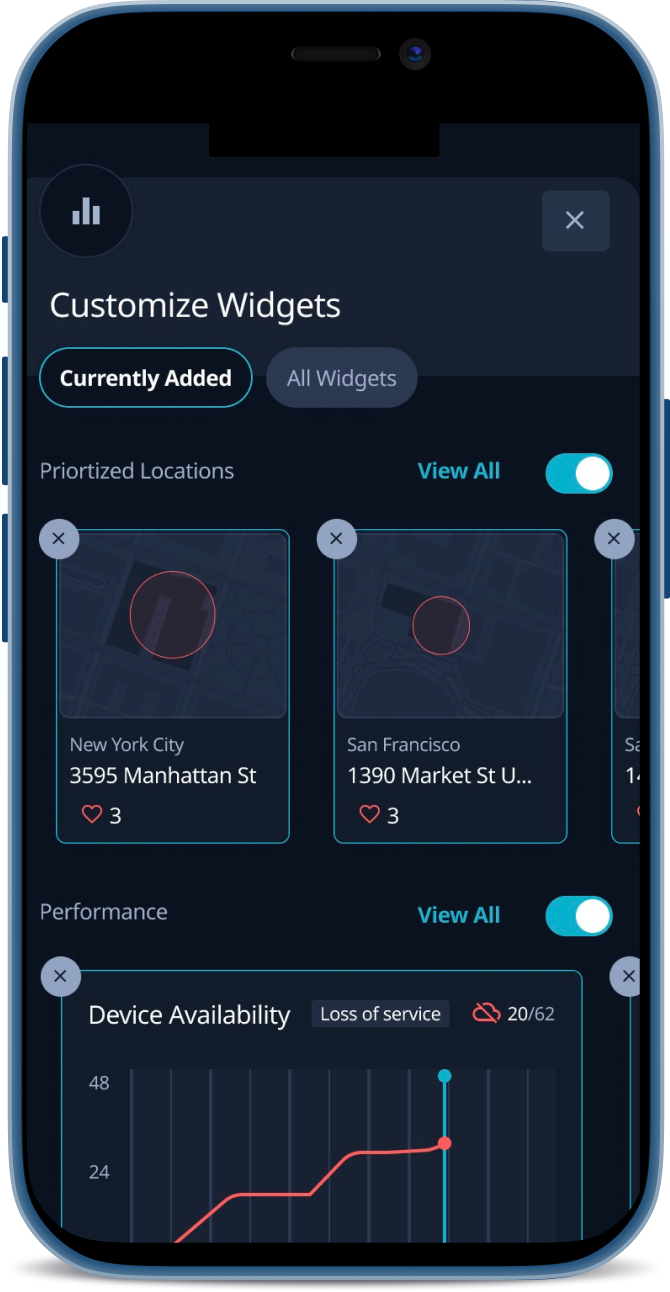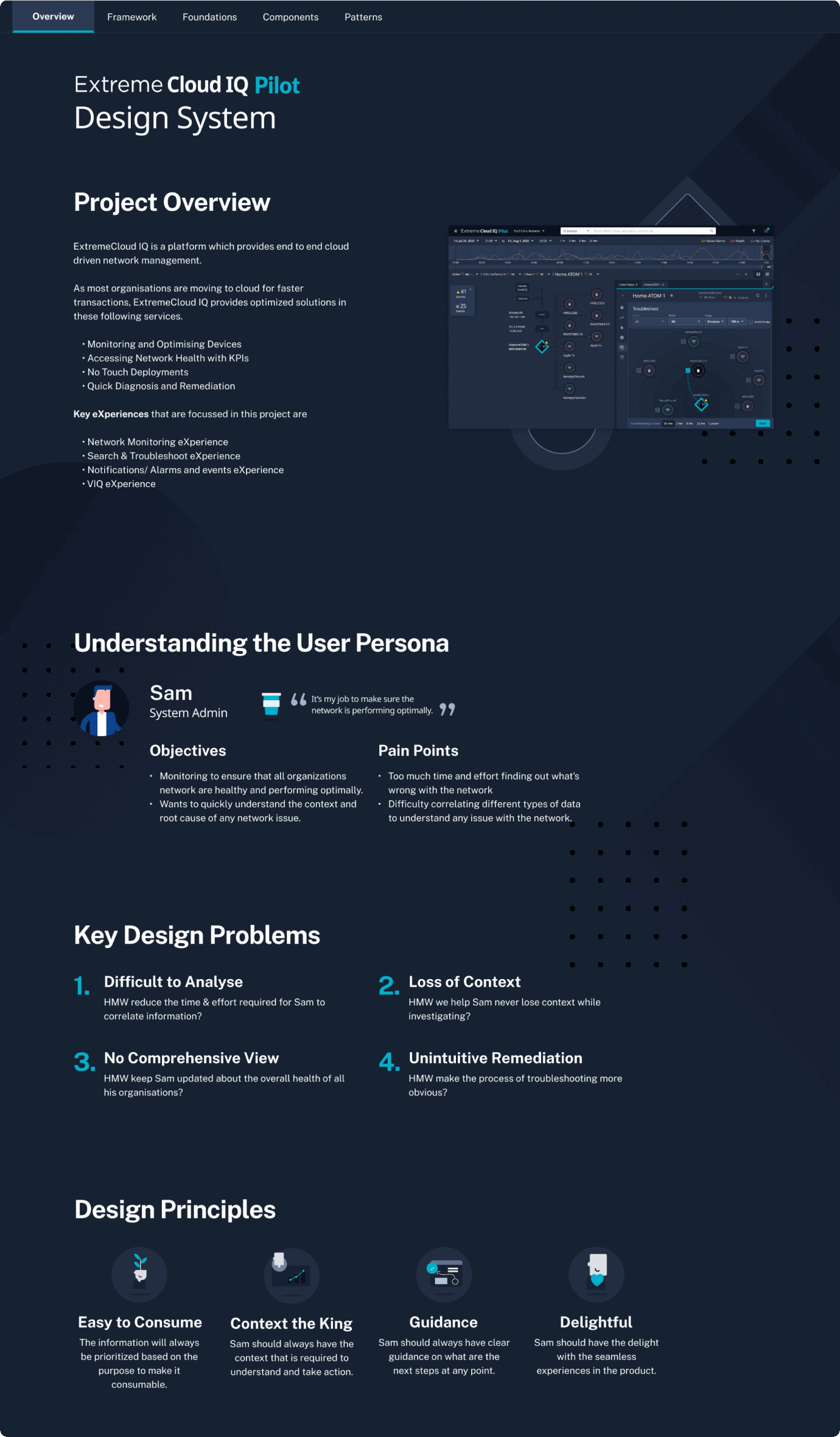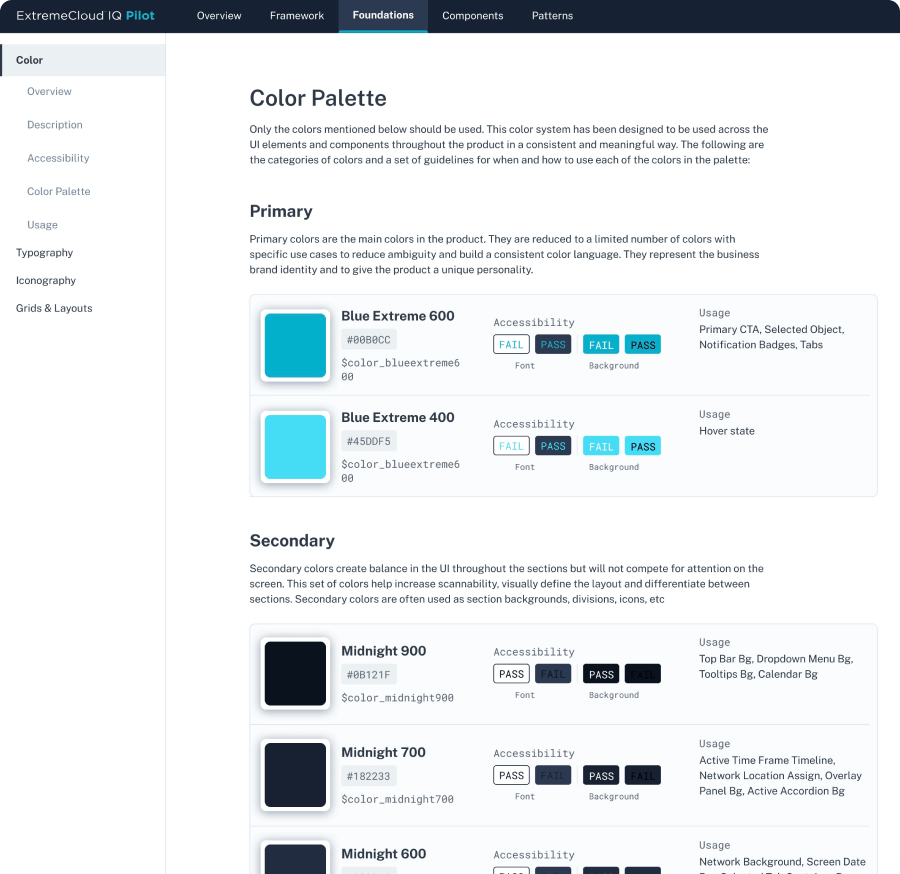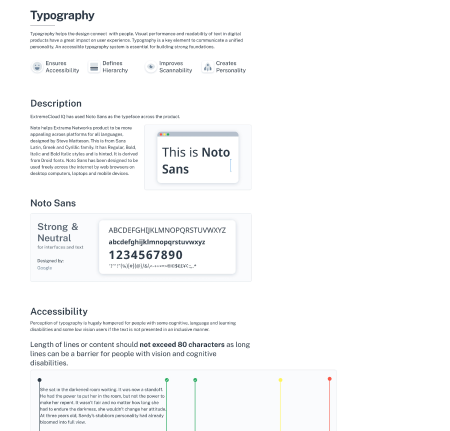Our redesign of ExtremeCloud™ made network administrators 2x faster at identifying, diagnosing, and resolving network issues.
In 2020, Extreme Networks engaged with UXReactor to redesign their support system to make it easier to use and empower administrators to more effectively resolve network issues. Over six months, we redesigned the ExtremeCloud™ application as an intuitive, seamless decision support system.
What We Did for Extreme Networks
- experience benchmarking
- stakeholder interviews
- features optimization
- UI redesign
- created a product design system
With Extreme Networks, we’ve evolved ExtremeCloud™ IQ from a tool with powerful features to a tool that empowers people to perform at their best.
Network administrators can now easily view the complete performance, health, and security picture of every location, device, and user. They have instant insights with a tool that’s seamless and simple to use. Network administrators are now 2x faster at identifying, diagnosing, and resolving network issues.

UXReactor went beyond the interface and vastly improved the user experience for our complex enterprise application. They’ve become a partner in our success.
While the results speak for themselves, the full story of our redesign of the Extreme Networks ExtremeCloud™ demonstrates the way we work with enterprise clients to deliver Experience Transformation.
Continue reading for more detail on how our design process did that for Extreme Networks.
System administrators who used ExtremeCloud™ IQ were struggling to monitor, troubleshoot, and deal with network incidents.
Here’s what we saw:
- Information was hard to find across too many screens.
- Users constantly lost context while triaging and correlating information, which made system admins inefficient at root cause analysis.
- The solution forced users to be reactive because it didn’t alert admins to potential future problems with the network.
- There wasn’t enough orientation and guidance built into the application, which made it hard to learn and increased the risk of user errors.
- Users couldn’t easily see the effects of network configuration changes and sometimes compromised entire networks.
The cause? The software framework was built in siloes so that location maps, alarms, device lists, and other critical data sources were scattered and segmented. Over time, features were added as a bandaid on the original design, which made the product even more cumbersome.
System administrators had to rely on multiple workarounds, which led to delays, regular escalations, and customer dissatisfaction.
A UI refresh would not solve those problems.
Drawing on our proprietary UX process, we collaborated closely with Extreme Networks to completely redesign ExtremeCloud™ IQ
This enabled the system to:
- Guide system administrators to priority problems faster
- Make information easy to consume, even for less experienced users
- Give admins the context they need to make accurate decisions quickly
- Keep users updated about the overall health of all locations, with a comprehensive view
- Make the entire experience seamless and delightful
Simplifying the Application Framework
The new ExtremeCloud™ IQ framework is simplified. In place of multiple screens, the user engages with just one. ExtremeCloud™ IQ presents related elements like location, device details, alarms, and device health information, always in context. ExtremeCloud™ IQ is designed to disclose information progressively. It directs the user to priority information, so system admins can focus their attention. And it guides the user to understand the root cause of an alarm.
Adding Simulation Functionality
In redesigning the ExtremeCloud™ IQ framework, we also added functionality allowing users to simulate network changes. The application now shows the detailed impact of any change, so users can make decisions proactively without risking the network.
Simplifying Product Onboarding
Finally, we simplified the onboarding process. Instead of inundating users with complex jargon and advanced functionality, we designed it to acquaint users with their new network management powers progressively.
Revamping the Product UI
Of course, this project was initially scoped as a UI clean-up — and we didn’t forget the visuals. As you can see, the new UI looks and feels thoroughly modern. But the visuals also support the end goal: admin efficiency.
Where the original UI was inconsistent, busy, and distracting, with too many different fonts, colors, icons styles, and other design components. The new ExtremeCloud™ IQ is streamlined and coherent. The user can engage with rich data visualizations without cognitive overload because the most important information is prominent.

This engagement improved the product, but it also improved the team. UXReactor has changed how my team thinks about product problems. Now we’ve engaged UXReactor to build our capacity for ongoing experience transformation.
Creating a Product Design System
Over the years, Extreme Networks has acquired a number of companies and products, and each came with a slightly different look, feel, and unique product behavior. While standardizing the ExtremeCloud™ IQ product behavior, we created a product design system for all Extreme Networks applications. We wanted the overall portfolio to feel more cohesive.
The design system documents a standard method for building Extreme Networks products from the ground up. It creates economies of scale because every build and every structural change follows the same pattern. Product managers, designers, and developers have a single source of truth.
The Reality of Experience Transformation
Transforming users’ experience with one product isn’t enough. To secure a lasting competitive advantage, our clients have to become user-centric to the core of their organizational DNA. For technology-centric functions, that transformation requires a 180° shift in perspective from “This is what I know works and what the competition is doing” to “What does the user need from this experience?”
Over six months, what started as a UI refresh became a UX redesign. Ultimately, we elevated the engagement to become what we call an experience transformation project.
- We’ve evolved ExtremeCloud™ IQ from a tool with powerful features to a tool that empowers people to perform at their best.
- Network administrators can now easily view the complete performance, health, and security picture of every location, device, and user. They have instant insights with a tool that’s seamless and simple to use.
- Tasks that were previously complex and laborious now involve far fewer steps. It’s 2x easier to monitor networks, understand alarms, and troubleshoot a device.
- The new ExtremeCloud™ IQ is a support system for faster, more accurate decisions that are scalable. It frees up time otherwise spent troubleshooting, so admins can devote that time to planning better network infrastructure using insights from the tool.
- For customer organizations, ExtremeCloud™ IQ reduces cost, complexity, and downtime. That means increased customer satisfaction for retail operations like the coffee chain in our example. Uptime is even more critical for clients managing connectivity at multiple office locations, hospitals, schools… the impact ripples out.
As a result of their transformation, Extreme Networks has created a role for a leader whose sole responsibility is to elevate the user and customer experience (CX).
We are helping the new experience lead build her team by interviewing, coaching, establishing processes, and exporting the structure that has made UXReactor successful.

Transform the way you engage with the public
Efficient, accessible public services tailored to residents' needs.
Learn More